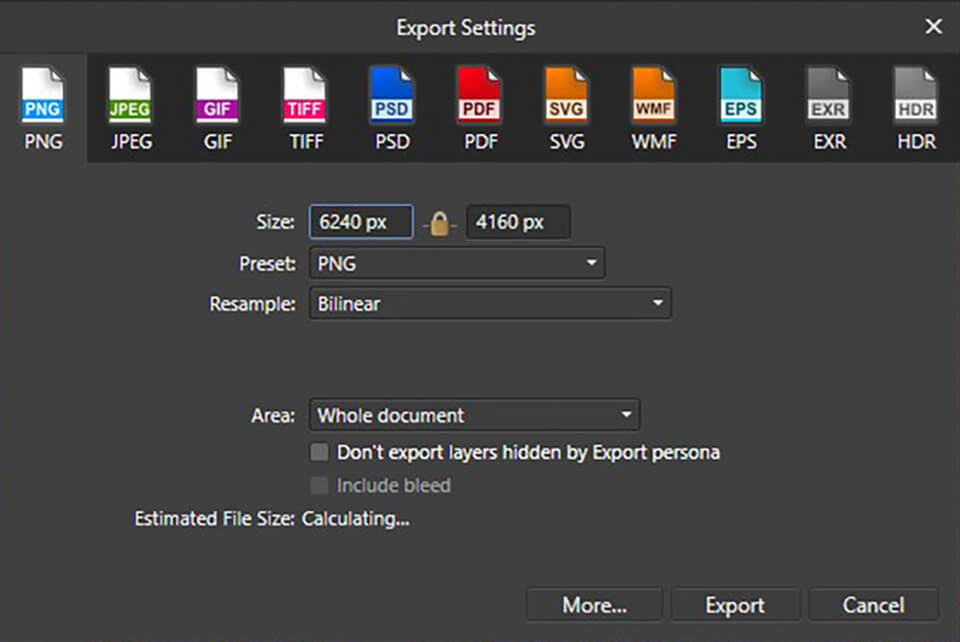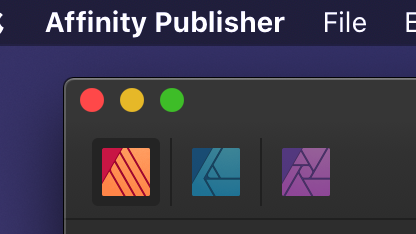When I talk to people trying to learn Affinity Photo, this is one area where many have problems. It can be very confusing until someone explains what’s happening. You can also watch this video in the “Affinity Photo Personas Explained” tutorial.
The app's list of features is long and - for less experienced users - might seem somewhat intimidating, but a key feature of Affinity Photo is its use of personas that help to streamline your. When I talk to people trying to learn Affinity Photo, this is one area where many have problems. It can be very confusing until someone explains what’s happening. You can also watch this video in the “Affinity Photo Personas Explained” tutorial.
If you are new in Affinity products you probably already noticed few icons on top left corner of software. In this tutorial, I’ll breakdown what is the personas and how you can use them.
Personas are the useful features that giving you the ability to control software interface based on your project. You can change personas depend on what kind of work you are doing right now and what kind of tools you are using. When you are changing persona interface and toolbar changing. Each persona has tools on toolbar that unavailable in other persona’s toolbar
Both products Affinity Designer and Affinity Photo has personas but they are different. As each software inherits for different purposes. Here I’ll explain to you how you can use different personas.
Personas of Affinity Designer
Draw persona – This is the default persona in AD and this persona inherent mainly for vector drawing. With this persona, you can create, modify and do everything that you are doing with vectors.
Affinity Photo Personas
Pixel persona – If you are working with raster images then this persona for you. With this persona, All tools that you can use with raster images like brushes, textures and other image tools will be available.
Export persona – This persona ideal for exporting works if you are exporting your designs for web or another purpose.
Personas of Affinity Photo
Affinity Photo Personas De
Affinity Photo has more personas that Affinity Designer


Photo persona – This is the default persona that mainly inherits to photo editing and other operations with photos.
Liquify persona – This persona ideal for retouching and similar operations with photos.
Develop persona – Ideal for raw images. This persona giving you ability work with image colors and tone in advanced level.
Tone mapping persona - An environment dedicated to tone mapping images. Although intended for 32-bit documents, you can also enter this persona from 8-bit or 16-bit documents and tone map non-HDR images.

Export persona – This persona as in AD useful for fast exporting.
If you are Photoshop or Illustrator user then you’ll understand personas faster as personas are Layouts in Adobe products.

Related items
Latest from Murad Gulaliyev

How it works
The Export Persona uses a combination of panels and tools to create slices. Slices are export areas which you choose to output from your document.
The Layers panel, Export Options panel and Slices panel are used in combination in Export Persona. A Slice Tool is a unique tool in Export Persona which is used to create custom slices.
Using the Layers panel
The Layers panel is different from the Layers panel in Designer Persona. It is used exclusively as a precursor for selecting artboards, layers, groups, or objects from which slices can be created, and added to the Slices panel.
When you export a Layers panel item as a slice, the slice will automatically size to what is considered to be the extent of the selected item. A circle symbol at the top right of the slice indicates that it is auto-sized. If you choose to resize the slice, the symbol changes to a square, indicating that the slice has been modified. A resized slice created from a Layers panel item can be reset to 'auto-sized' at any point.
Using the Export Options panel
The Export Options panel lets you set up your default export settings, or settings for the currently selected item prior to slice creation.
Using the Slices panel
The Slices panel stores all your slices (from the Layers panel or Slice Tool) ready for export directly from the panel. Each created slice has an initial export format (e.g., PNG, JPG, or SVG) associated with it on creation, with additional export formats being added per slice if needed; each export format lets you export at different size scaling or absolute sizes.
Affinity Photo Personas Online
You can use the filenames in the Slices panel to specify (or create) a folder hierarchy in which to place your exported files. This is achieved through the use of the forward slash, or oblique, character.
For example, a PNG hero image could be placed within an img folder within an assets folder using the following syntax: assets/img/hero
If any part of the folder structure does not exist, the folder hierarchy will be created when the appropriate slices are exported using Export Slices (n).
You can export the entire document's page using File>Export or by selecting the predefined spread area on the Slices panel.
Using the Slice Tool
The Slice Tool gives you full freedom to create export areas of all sizes, over any part of your document.
